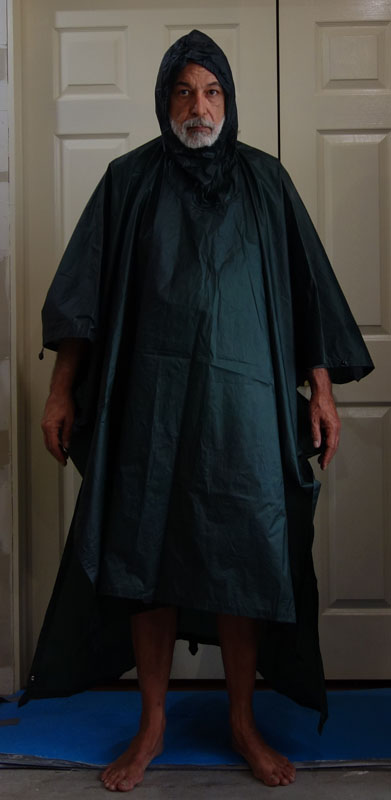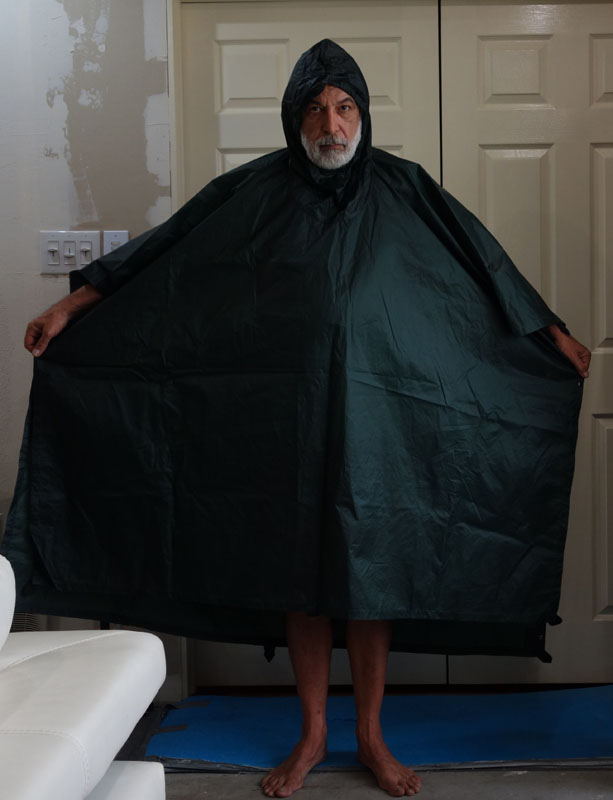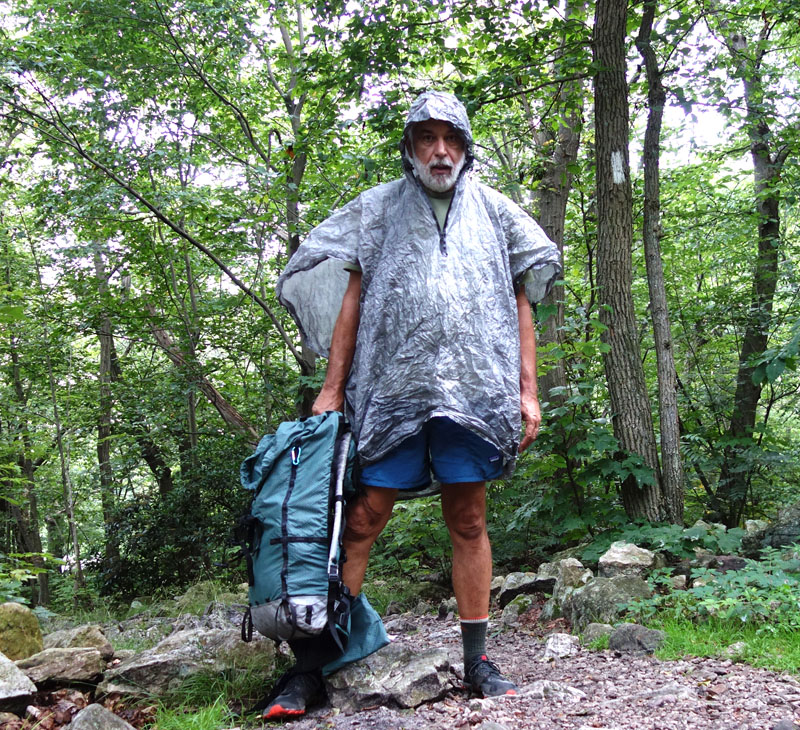
The design of the zPacks Poncho/Groundsheet is ingenious. Most poncho/tarps are too big as a poncho and minimal in size as a shelter. Because the poncho/groundsheet only needs to fit inside a zPacks Hexamid shelter, it is much smaller than most ponchos, and is not susceptible to all the hazards of the typical poncho (i.e. blowing around in the wind and catching on brush).
Mine is made from .71 Cuben Tech fiber and weighs 3.4 ounces (96 grams).
Poncho as a Groundsheet
Using a poncho as a groundsheet is often risky business; it is subject to developing holes, which is not desirable in a piece of rain gear. When I first got the zPacks Poncho/Groundsheet I sometimes used it as a groundsheet with my zPacks Hexamid Shelter. Using the poncho as a double duty groundsheet, I was very careful with site selection. If there is a chance of something poking a hole, I place my sleeping pad under the ground sheet.
After a few times using it as a groundsheet, I decided it was not a good idea to risk premature wear and tear and soon switch to a simple polypro ground sheet. Since the Poncho is constructed with Cuben Fiber material, it is easily damaged by sharp objects and simple friction against the ground. After a few trips I stopped using the poncho as a ground sheet; it is too expensive.
This piece of gear is not for everyone. It fits perfectly into my kit, based on how I hike and the other pieces of gear I use.
Note: I am wearing a fully packed zPacks Zero Backpack (size small) under the ponchos in all the pictures, which follow.
The gray poncho on the left is the zPacks. Actually it is normally a little longer, it had been sitting in my pack and I did not notice it was bunched up at the bottom. But I didn’t feel like taking another series of pictures. The green poncho on the right is a GoLite poncho/tarp. It is the typical size for most poncho/tarps. For reference, I am 5’11”.
A few notes about the zPacks poncho. It has a somewhat stiff bill, but often I wear a REI eVent baseball cap under the hood. In a light drizzle, sometimes I only partially zip up the poncho and leave the hood down. The zipper is waterproof and there is a draw cord to tighten in up. As you can see, my shorts get wet in the rain. Not a problem for me if the temperatures are in the 50’s Fahrenheit or warmer. But in wind-driven rain in the 40’s or 30’s my thighs get cold. In these situations I usually wear a zPacks Cuben rain kilt or a pair of zPacks Cuben chaps. Both are excellent for my needs.
As you can see above, the zPacks poncho doesn’t have a lot of excess material to flop and around and catch on things. Plus it is easy to see your foot placement when necessary. On one trip I had to descend several hundred feet down a ravine, that was choked with Catclaw and Cacti, in rain and sleet. Not only was I able to safely make my way down, the poncho did not get damaged. You could add a cord waist band if needed, but I haven’t found the need.
If you use trekking poles, your arms will get wet. But since I no longer use them, it is not a problem. In really nasty cold rain, I sometimes but my arms inside the poncho. Also the side zippers can be opened to allow in more air. I don’t sweat inside this poncho.
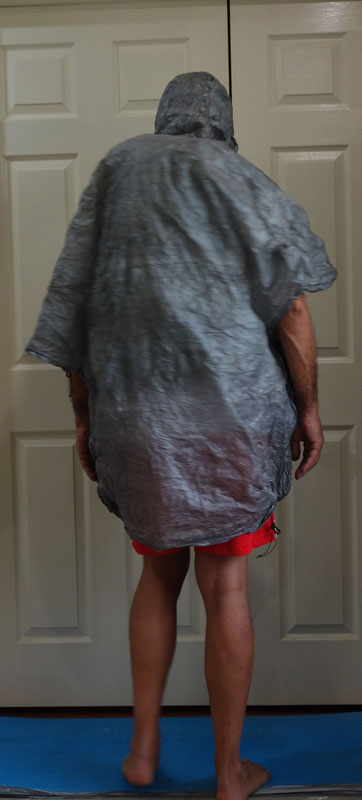
Back view.
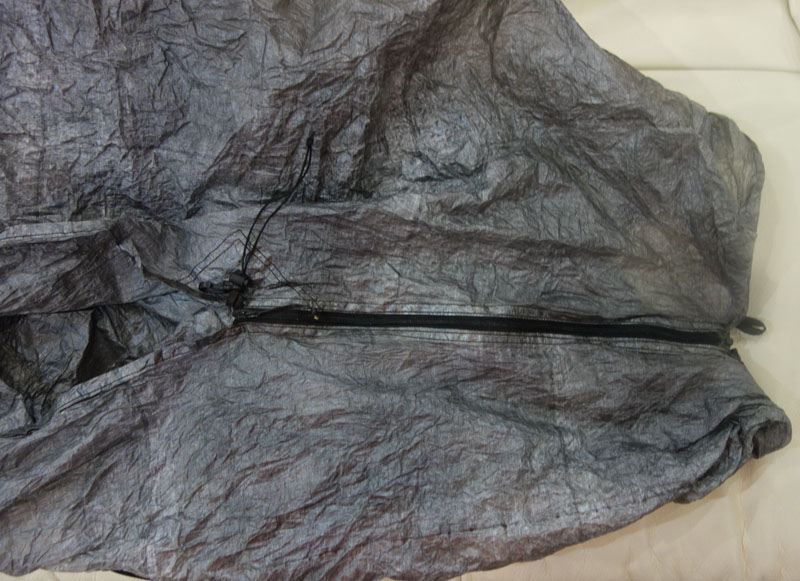
Side zipper. It is easy to put on the poncho. Unzip the sides and slip into the poncho. Now reach down and grab both ends of the poncho and zip it up. Repeat for the other side.
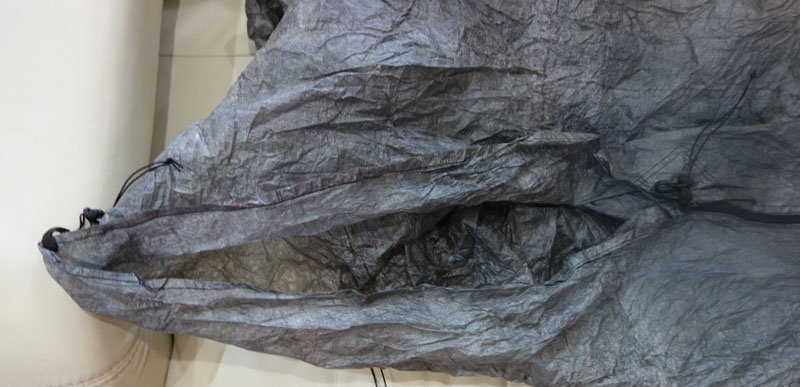
Arm opening above the zipper.
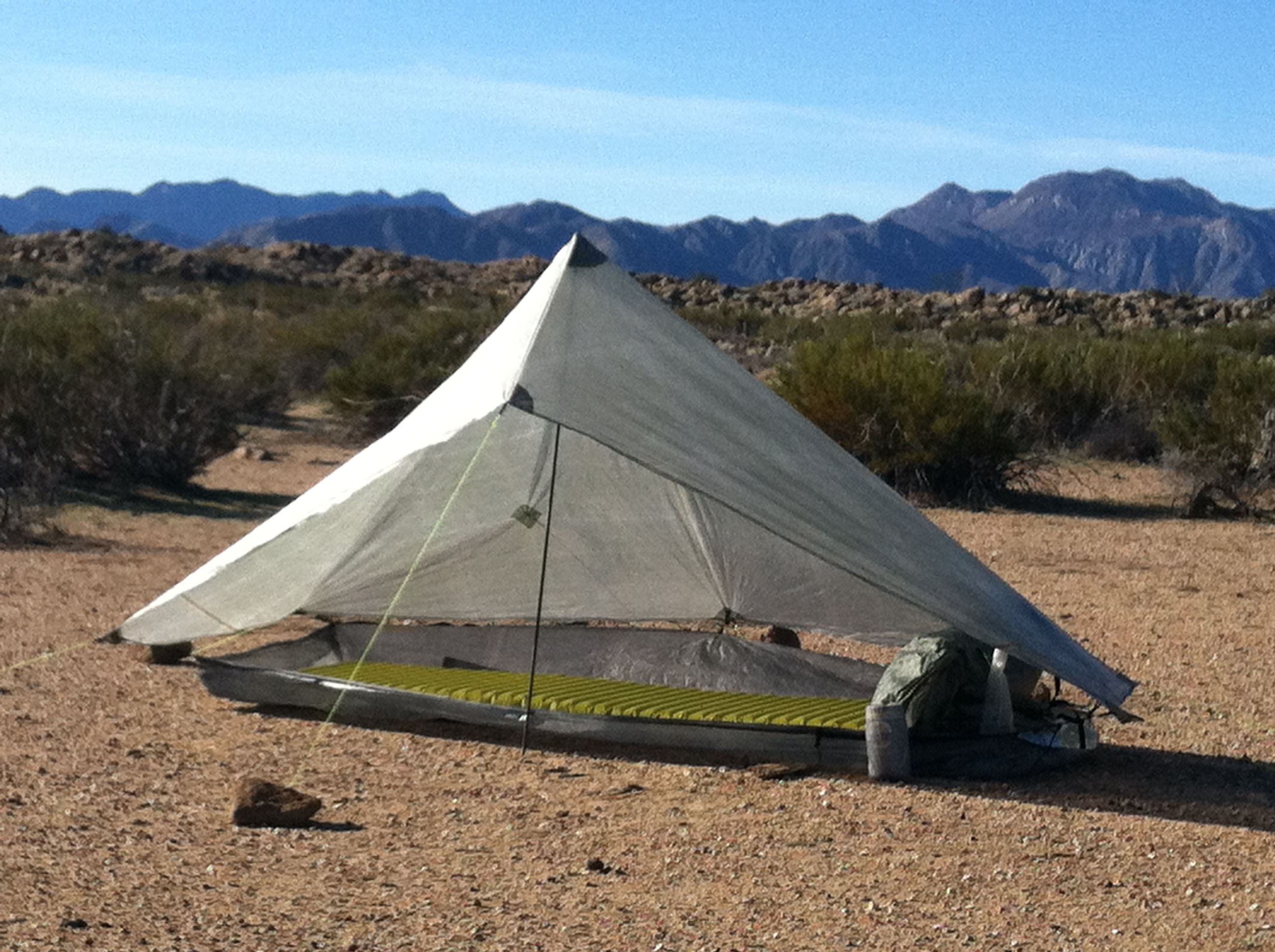
Poncho used as a bathtub floor in the zPacks Hexamid Solo Shelter.

